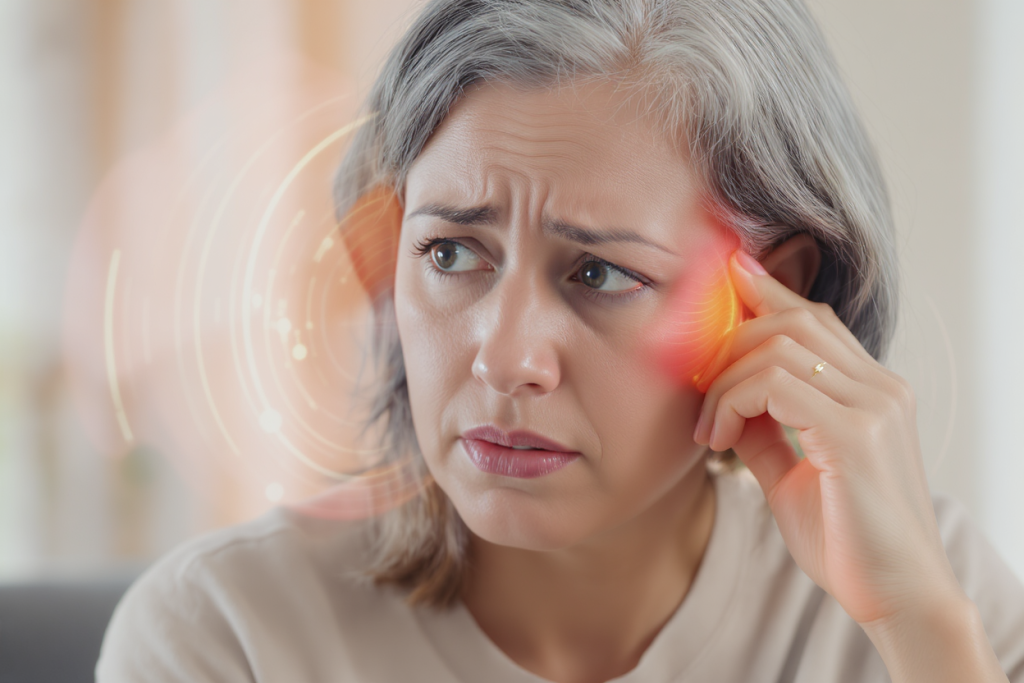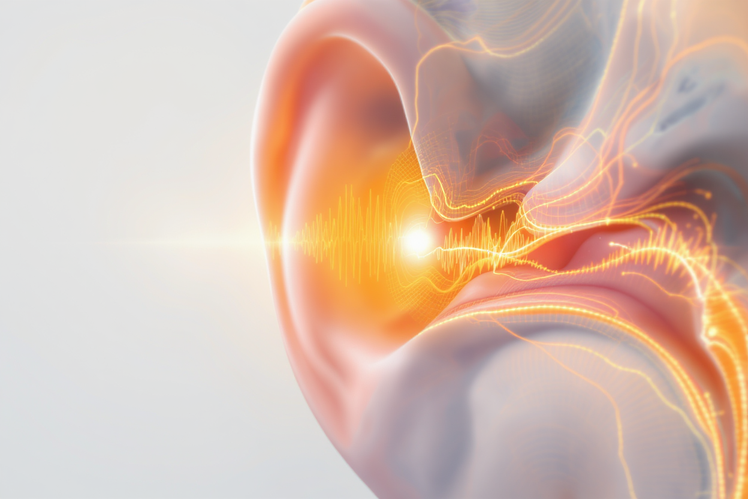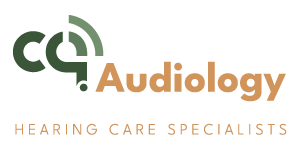
Hearing loss occurs when you’re unable to fully detect or understand sounds, making it harder to process speech and environmental noises. You might experience muffled sounds, struggle to hear soft voices, or have trouble following conversations. This common condition can stem from aging, noise exposure, medical conditions, or medications. Whether it’s conductive (affecting sound transmission) or sensorineural (nerve-related), various treatment options can help you reconnect with the world of sound.
Types of Hearing Loss and Their Characteristics
While many people experience hearing loss differently, there are three main types: conductive, sensorineural, and mixed hearing loss. Conductive hearing loss occurs when sound waves can’t properly reach your inner ear, often due to earwax buildup, fluid, or ear infections. You’ll typically notice muffled sounds and difficulty hearing soft voices.
Sensorineural hearing loss involves damage to your inner ear or auditory nerve. You might struggle to understand speech, especially in noisy environments, and find certain sounds too loud while others remain unclear. This type commonly results from aging, noise exposure, or genetics.
Mixed hearing loss combines both conductive and sensorineural problems. You’ll experience symptoms of both types, making diagnosis and treatment more complex. Proper evaluation by an audiologist is essential to determine your specific condition.

Common Causes and Risk Factors
Although hearing loss can affect anyone at any age, certain factors significantly increase your risk. Age-related hearing loss (presbycusis) is most common, typically beginning after age 65. Prolonged exposure to loud noises, whether from work environments or recreational activities, can damage your inner ear’s delicate structures.
Medical conditions like diabetes, high blood pressure, and certain infections may contribute to hearing loss. Some medications, particularly chemotherapy drugs and high doses of aspirin, can be ototoxic. You’re also at higher risk if you’ve experienced head trauma or have a family history of hearing problems. Additional risk factors include smoking, obesity, and untreated ear infections. If you’re frequently exposed to chemicals like solvents or heavy metals in your workplace, you may face an increased risk of hearing damage.
Signs and Symptoms to Watch For
How do you know if you’re experiencing hearing loss? You might notice that you’re frequently asking others to repeat themselves or turning up the TV volume higher than usual. Speech and other sounds may seem muffled, and you may have trouble understanding conversations, especially in noisy environments.
Watch for signs like difficulty hearing high-pitched sounds, problems following group conversations, or struggling to identify where sounds are coming from. You might find yourself reading lips more often or feeling exhausted after social interactions due to the extra concentration required to hear. Ringing, buzzing, or whooshing sounds in your ears could also indicate hearing problems. If you’re avoiding social situations or phone calls because it’s becoming harder to hear, it’s time to consult a healthcare professional.
Diagnosis and Testing Methods
If you notice any of these symptoms, your doctor will likely begin with a physical examination of your ears using an otoscope. This initial check helps identify visible problems like earwax buildup, infection, or eardrum damage.
Your doctor may then recommend several specialized hearing tests. Pure-tone audiometry measures your ability to hear sounds at different frequencies through headphones. Speech recognition tests evaluate how well you understand spoken words. Tympanometry checks your eardrum’s movement and middle ear function.
For children or patients who can’t participate in standard tests, doctors might use behavioral observation audiometry or otoacoustic emissions testing. These methods don’t require active participation but can still detect hearing issues. Based on these results, your doctor can determine the type and severity of your hearing loss.
Treatment Options and Management Strategies
Once hearing loss is diagnosed, treatment options vary based on the type and severity of your condition. Your doctor may recommend hearing aids, cochlear implants, or bone-anchored hearing systems. Hearing aids amplify sound and come in various styles, from behind-the-ear to completely-in-canal models. Cochlear implants, which bypass damaged parts of the ear, are suitable if you have severe hearing loss.
You can also benefit from assistive listening devices like amplified phones, captioning services, and FM systems. Speech therapy helps you adapt to hearing devices and improve communication skills. If your hearing loss stems from medical conditions, treatments may include earwax removal, antibiotics, or surgery. It’s essential to protect your remaining hearing by avoiding loud noises and wearing ear protection when necessary.
